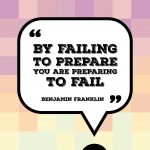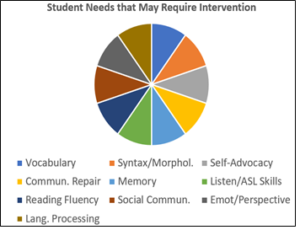Related Products
For Professionals
- Amplification
- Assessment of Student Skills, Challenges, Needs
- Early Childhood: Infants, Toddlers, Preschool
- Hearing Loss – Identification, Impact and Next Steps
- IDEA Law Summary Information
- Language and Speech Development Issues
- Legal Issues in Serving Children with Hearing Loss
- Listening (Auditory Skills) Development
- Planning to Meet Student Needs
- Self-Advocacy Skills for Students with Hearing Loss
- Self-Concept: How the Child with Hearing Loss Sees Himself
- Social Skills
- Speech Perception & Learning
Related Teacher Tools Takeout Items
Preparing for Success: What Classroom Teachers Need to Know About Students with Hearing Loss

At the start of each school year, thousands of students enter classrooms with teachers who have never encountered a child with hearing loss.
The following list summarizes key needs of students who are deaf or hard of hearing and the critical role of teachers to set the stage for student success in the mainstream classroom.
Key Points to Keep in Mind About Learners who are Hard of Hearing
1. Hearing loss is an access issue, not a learning disorder. Job #1 is to ensure that the student receives the same amount of instruction and classroom communication as peers. The student’s learning issues are due to missing parts of communication experienced in the past and throughout every day.
2. Hearing devices do NOT restore normal hearing. Children who are hard of hearing continue to miss bits and pieces of what is said, especially when farther than 3 feet from the speaker, in noise, not able to see the speaker’s face, or when unfamiliar vocabulary is used. Using FM/DM/HAT hearing devices consistently helps to level the playing field for optimal access to classroom communication.
3. You will ‘see’ that the student hears based on his or her behavior. It is easy to assume that the student perceived 100% of what you or peers said. Instead students are often trying to fill in the blanks for unheard speech sounds. Cat, cap, calf, cast may all sound like ‘ca’; rhyming words like drought/trout, few/blue, and countless others will be mistaken for one another. Extra processing time is necessary.
4. There is typically a need for the teacher to provide more repetition, to use a slower rate of speech, and to ensure the student is able to see the face of the person talking. Even with an effort by the teacher to make sure these modifications happen consistently, the student may have a harder time keeping up with the pace of learning due to continuing difficulty fully accessing all that is said around him or her.
5. Group work and social situations can be especially challenging due to multiple speakers, fast speech, and background noise. Social awkwardness or ‘being out of step’ socially can often occur.
The Jul-Sep 2018 issue of Volta Voices provided the following information.
What Teachers Can DO to Help a Student with Hearing Loss
How to identify a communication breakdown
- Confused facial expression
- Inattentiveness
- Disinterest/withdrawal
- Frustration, anger or anxiety’
- Bluffing, smiling and nodding
- Inappropriate responses, such as changing subjects or off-topic responses
- Body gestures like a shrug
- Hesitation in responding or interrupting
- Not taking turns in conversation
Classroom Tips for Teachers – Speaking
- Stand or sit close to the child (3 feet is ideal at the hearing device microphone level if possible)
- Make sure the child has good visual access to the speaker’s face
- Stand still as much as possible when you are talking
- Speak clearly at a slightly slower rate with slightly increased intensity. Emphasize key words. Do NOT over enunciate
- Use natural gestures, exaggerated prosody, and facial expressions
Classroom Tips for Teachers – Engaging
- Ask for clarification: “What did you hear?” and “What are you going to do?” Look for clues that the child did not understand you. Do NOT ask yes/no questions such as “Did you hear me?” or “Do you understand?”
- If the child does not understand, simplify and shorten sentences. Rephrase with simple, more familiar vocabulary.
- Touch the child, call his name, make eye contact or give a visual signal when instructions are given: “Listen: this is important” or “Look at me.”
- Expect the child to participate in classroom discussions and group work.
- If you do not understand the child, repeat what you did understand and ask for the rest of the information: “Yes we are on chapter 3. What did you want to know about the instructions?”
- Repeat the essence of a classmate’s question or answer. Direct the child’s attention to the person speaking by pointing to them as you call on them to answer, and/or say their name.
- State the topic before initiating discussion and state when the topic changes. Preface a change in activity by stating, “Next, we will talk about…” or “Now we are talking about…”
Classroom Tips for Teachers – In the Classroom

- Provide lists to the parent and/or educational support staff prior to lessons with themes and vocabulary for pre-teaching.
- Ensure good lighting and recognize that dim lighting will impede the child’s ability to use visual cues. Do not stand in front of a brightly lit window as that interferes with speechreading.
- Ask classmates to speak one at a time during discussions.
- Use multimedia supports, visual aids, and hands-on demonstrations as much as possible.
- Make sure all visual/audio media is captioned.
- Make sure the child has the correct patch cords to allow use of the FM/DM/HAT system for any lessons or assessments provided by computer or media device. Do not assume that headphones will be sufficient to allow the child to hear with their hearing devices.
- If you or classmates are reading aloud, provide the book or a copy of the print for the child to follow along.
- Provide a written summary of any video material or any material that is read aloud.
- Modifications may be necessary, such as one or more peer note takers, extra time on in class assignments and tests, modifications of reading and written assignments, alternative tests, or allowance for oral tests or providing testing in a quiet room.
How a Teacher can Manage Peer Conversations
If a peer does not understand a child with hearing loss, the teacher can help the child:
- Repeat at a slower rate, use louder speech, or shorter sentences. “Did you say….?”
- Repeat, emphasizing key words
- Rephrase
- Add more information. “What happened next?” and “When did this happen?”
- Write it or use gestures. Ask the child with hearing loss to “show me”.
When the Child with hearing loss does not understand a peer, a communication breakdown has occurred. A repair strategy is needed. Ask the peer to:
- Repeat what was originally said (say it again)
- Rephrase what was said, using different words or breaking it into shorter sentences
- Elaborate by using more information to clue in the listener (tell me more)
- Cue by providing background information to focus on the topic and building from the known
- Spell out the letters to emphasize sounds in the misunderstood word or words
- Ask: “What did you hear? Did you say … or ….?
Heading into the Mainstream: Preparing your child for mainstream schooling also means preparing the teacher in the classroom. Velvet Buehler, MA, CCC, SLP/A. July-September 2018. https://www.agbell.org/Portals/26/PDFs/Volta-Voices-Jul-Sep-2018-Final.pdf.compressed.pdf?ver=2018-08-21-161818-920
Additional Resources
- Dear Classroom Teacher Letter
- Dear Classroom Teacher – You have a student with hearing loss (brief article)
- Refer to the Heading into the Mainstream article for tips for how parents can prepare their children for a good experience in the mainstream school setting.
- The Impact of Hearing Loss
- Describing the Impact of Hearing Loss to Parents/Teachers
